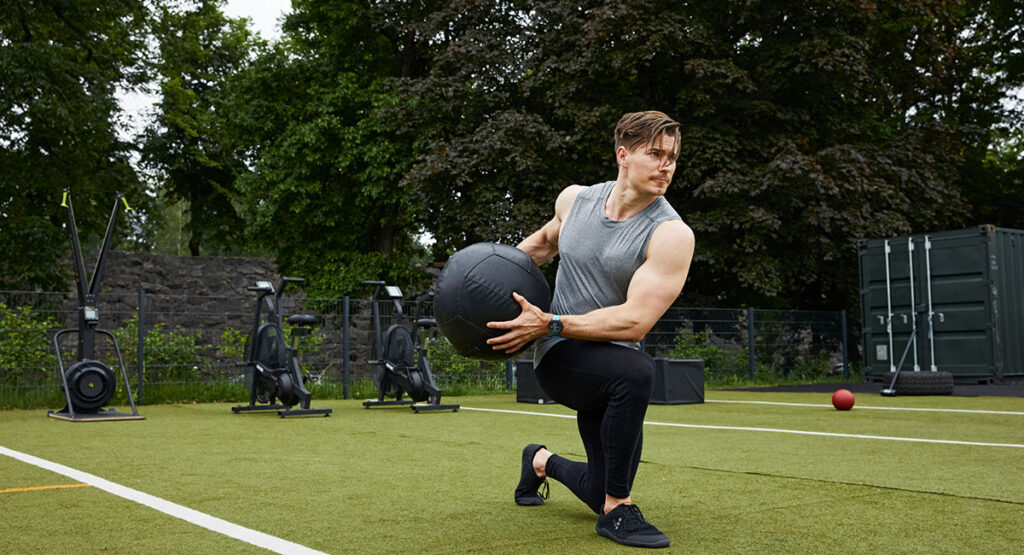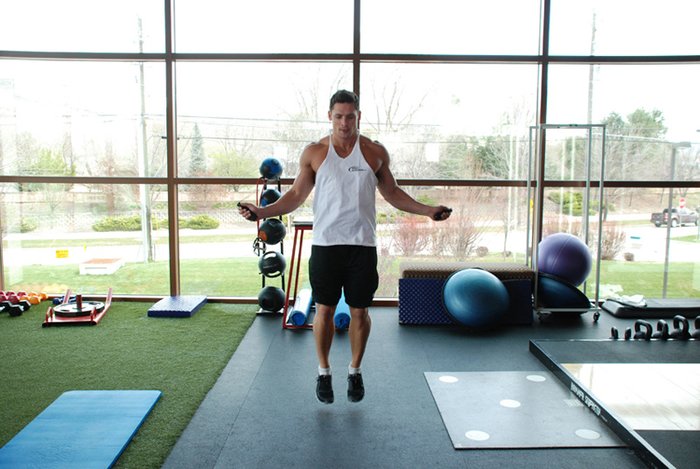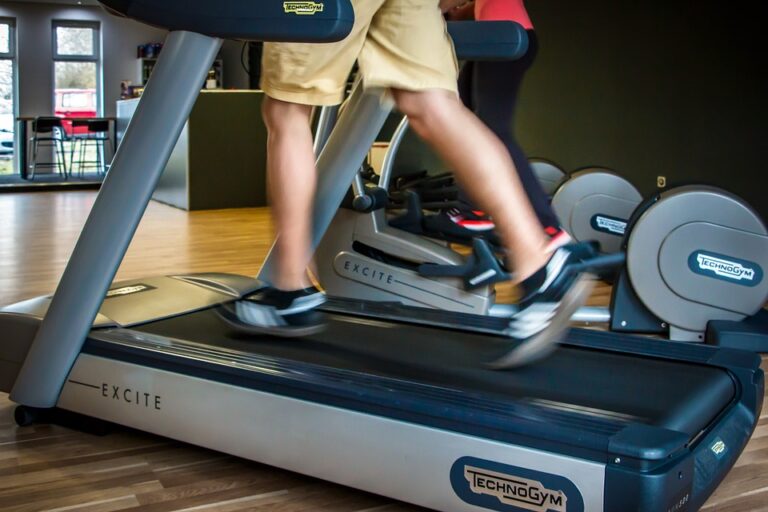A pulse raiser, or warm-up, is essential before exercise for a few key reasons. It gets our heart beating a bit faster, which helps our cardiovascular system get ready for the workout ahead. This quick warm-up also raises our body temperature, making our muscles more flexible and reducing the risk of injuries.
Plus, it improves blood flow to our muscles, ensuring they get the oxygen and nutrients they need. So, it isn’t just a quick start; it’s like giving our body a heads-up, getting it ready to tackle the upcoming activity with less chance of getting hurt.
Keep Reading To Explore More!
Understanding the Human Body: A Comprehensive Exploration

The body a marvel of intricate systems, responds remarkably to activities that elevate the pulse, offering a multitude of health benefits. Primarily, these activities foster cardiovascular health by strengthening the heart and improving its efficiency, reducing the risk of heart disease.
Simultaneously, heightened physical activity ensures improved blood circulation, delivering oxygen and nutrients to vital organs, supporting their optimal function, and facilitating the body’s natural detoxification processes.
Beyond the physiological realm, engaging in such activities becomes a cornerstone for mental well-being. Stress reduction is a notable outcome, as exercise triggers the release of endorphins, the body’s natural stress relievers.
Further, this coupled with an enhanced mood, contributes to a positive mindset, alleviating symptoms of anxiety and depression. Importantly, cognitive function sees improvement, with regular exercise promoting sharper thinking, better concentration, and a cognitive resilience that extends beyond the immediate activity.
In the pursuit of fitness and endurance, activities that elevate the pulse contribute to increased stamina, allowing for more extended and sustained physical efforts. This endurance, coupled with enhanced physical performance, reflects not only in improved muscle strength but also in heightened agility and coordination.
The process of building strength and flexibility further fortifies the body, reducing the risk of injuries and supporting overall musculoskeletal health.
Elevate Your Warm-Up Game: A Dynamic 10-Minute Routine for Peak Performance
Ensure a robust warm-up by dedicating a solid 10 minutes before diving into your workout. Begin with a 5-minute pulse raiser, opting for a brisk walk, stair jogging, or utilizing gym cardio machines like the rower or exercise bike. Transition seamlessly into the next phase with jumping jacks to elevate your heart rate further.
Now, let’s delve into dynamic stretches, a crucial component of your warm-up routine:
- Jumping Jacks (x10):
- Take a stance with feet together, hands at your sides, and knees slightly bent. Activate your core, fix your gaze forward, and execute a simultaneous jump, parting your legs while swinging your arms overhead.
- Lunge to Flye (x10 on each side):
- Start with arms down, palms facing in front. Step forward with your left leg, initiate a lunge, and extend your arms wide. Maintain a straight posture. Return to a standing position and repeat on the right. Execute 20 reps, alternating sides.
- Side Lunge with Twist (x10 on each side):
- Stand with extended arms at shoulder height and clasped hands. Engage in a side lunge with your left leg, simultaneously twisting your torso and arms in unison. Keep your focus on your hands. Return to the starting position and replicate on the opposite side. Aim for 10 reps per side.
- Alternating Split Deadlift (x10 on each side):
- Commence with arms at your sides. Step forward with your left leg, maintaining a slight knee bend. Hinge at your hips, extending your arms down. Ensure a straight spine. Return to the starting position and replicate on the right side. Complete 20 reps, alternating sides.
- Squat to Reach (x10):
- Stand with feet slightly more than shoulder-width apart, arms down, and a straight back. Execute a squat, hold momentarily, then power up through your feet, straighten your legs, and raise your arms overhead. Return to the initial position. Repeat this sequence 10 times.
- Crossover Touch and Reach (x10 on each side):
- Stand with feet wider than shoulder width. Hinge forward from the hips, twist your torso, and reach for your right foot with your left hand. Concurrently, extend your right arm up and fix your gaze on your hand. Return to the center and repeat on the opposite side. Perform 10 reps on each side.
Cooling Down Right: Post-Exercise Essentials for Recovery and Well-Being
After exercising, it’s important to cool down, even if grabbing a drink seems more tempting. Cooling down helps prevent injuries and makes you feel better. Here’s what it does:
- Gradually Lower Heart Rate:
- Cool down slowly to bring your heart rate back to normal.
- Help Muscles Recover:
- Moves blood and oxygen around your muscles to help them recover.
- Avoid Blood Pooling:
- Keeps your muscles working and your heart pumping, so blood doesn’t pool.
- Get Rid of Waste Products:
- Removes waste products like lactic acid from your muscles.
- Reduce Muscle Soreness:
- Lowers the chance of your muscles feeling sore later.
To cool down, do a gentle jog that slows down to a walk. After that, do some easy stretches for all the muscles you used. Don’t forget about your upper body, especially if you played sports like football, soccer, or rugby.
If you like, you can also try a sports massage. It’s like a quick massage before exercise to warm up your muscles or a massage after to help them recover. It feels good and helps your muscles get back to how they were before you exercised!
Weight Management
Effective weight management is a multifaceted journey that extends beyond mere numbers on a scale. Regular physical activity plays a pivotal role in achieving and maintaining a healthy body weight.
Firstly, engaging in activities that elevate the pulse promotes calorie expenditure, aiding in weight loss or maintenance. Whether through cardiovascular exercises or strength training, the body expends energy, contributing to a favorable balance between calories consumed and calories burned. This not only helps shed excess weight but also establishes a foundation for a sustainable, healthy lifestyle.
Furthermore, physical activity is instrumental in shaping body composition. Incorporating strength and resistance training into a fitness routine helps build lean muscle mass. Muscle tissue has a higher metabolic rate than fat, meaning that as muscle mass increases, the body becomes more efficient at burning calories, even at rest. This not only contributes to weight management but also supports long-term metabolic health.
Beyond the physiological aspects, regular exercise positively influences behaviors related to weight management. It enhances discipline, motivation, and adherence to healthy habits, creating a positive feedback loop. Additionally, it can alleviate stress and emotional triggers that may lead to overeating, fostering a healthier relationship with food.
Staying Healthy with Exercise: Preventing Diseases and Long-Term Benefits
Engaging in activities that make your heart beat faster is super important for preventing diseases. It helps a lot with keeping your heart and blood vessels healthy, reducing the chances of getting heart-related problems and high blood pressure.
For preventing conditions like Type 2 diabetes, these activities are like superheroes. They make your body better at using sugar and help in keeping your blood sugar levels in check. Plus, they’re great for managing your weight, which is like a superpower against diseases like obesity and joint problems.
And guess what? Doing these activities regularly can boost your immune system, helping you fight off illnesses better.
But it’s not just about preventing diseases; it’s also about long-term benefits. Keeping your heart strong and improving blood circulation means you’re less likely to have heart issues as you get older.
Also, regular exercise is like a secret weapon against diabetes too. It helps your body manage sugar levels over time, keeping you healthier.
As you age, it is like a magic spell for your muscles, bones, and joints. It helps you move better, stay stronger, and lowers the chances of problems like osteoporosis.
And don’t forget about your brain! Doing it on a daily bases is like a workout for your brain, reducing the risk of memory problems as you grow older.
So, by just keeping active, you’re not only preventing diseases but also giving yourself superpowers for a healthier and happier life in the long run.
How To Motivate Yourself To Warm Up For Exercise?

- Feel the Beat with Music:
- Play music that makes you happy. Kick off your workout with your favorite song to lift your spirits and get you excited.
- Dress in Layers:
- Put on layers during your warm-up to keep the heat from your movements. Peel them off slowly as you warm up more to avoid feeling too chilly.
- Repeat Positive Words:
- Say positive things to yourself like ‘I am awesome and strong’ or ‘I can do every exercise today.’ It helps you focus on what you want to achieve and boosts your confidence for the workout.
With music, layers, and positive thoughts, your warm-up will be a breeze, and you’ll be all set to tackle your workout with a grin.
FAQ’s
Why is it important to do a pulse raiser warm up?
Warming up before physical activity is crucial for mental and physical preparation. It increases the heart rate, enhancing blood flow and enabling more oxygen to reach the muscles.
What does a heart raiser do?
A heart raiser is an activity that elevates the heart rate, increasing blood flow to active muscles and raising body temperature.
Why is warming up important?
Warming up is essential as it readies the body for aerobic activity, gradually increasing the heart and blood vessel system’s activity. It raises body temperature, enhances blood flow, and may reduce muscle soreness and injury risk.
What are the 10 benefits of warm up?
Benefits include increasing heart rate, improving blood flow to muscles, ensuring muscle flexibility, and serving as a form of mental preparation.
What are the three main purposes of a warm-up?
A warm-up increases blood and oxygen to working muscles, dilates blood vessels for easier blood pumping, and raises body temperature, enhancing muscle elasticity.
What are three important benefits to the warm-up session?
Benefits include increased oxygen release, easier muscle contraction, loosened joints, and enhanced brain-body engagement.
How long should you do a pulse raiser?
The pulse raiser can be performed for 5-10 minutes, or until you feel physically warmer and looser.
What is the other term for pulse raiser?
Another term for pulse raiser is a gradual increase in physical activity intensity during warm-up.
Is jumping jacks a pulse raiser?
Yes, jumping jacks, being a form of cardio, increases the heart rate, ensuring a healthy heart with improved blood flow and oxygen levels.
Does cardio improve heart rate?
Yes, aerobic exercise, or cardio, is beneficial for the cardiovascular system, strengthening the heart and blood vessels.
What are the 3 types of warm-ups?
The three types of warm-ups are general warm-up, static stretching, and dynamic stretching, including sports-specific warm-ups.
Final Words
A pulse raiser stands as a fundamental step in any exercise routine, offering a host of benefits that contribute to overall well-being. By gradually elevating the heart rate, it prepares the cardiovascular system for increased demands, optimizing blood flow and ensuring vital oxygen and nutrients reach the muscles.
Moreover, this not only enhances physical performance but also plays a pivotal role in injury prevention, improving the flexibility of muscles and connective tissues. Beyond the physical aspects, It fosters mental readiness, setting the stage for a focused and enjoyable workout experience.
In essence, this brief yet essential warm-up ritual serves as a proactive measure, priming the body for the optimal execution of physical activities and promoting a holistic approach to health and fitness.

